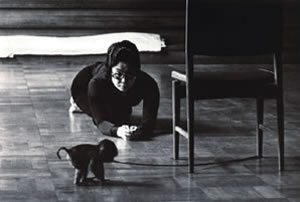DANCE NEW AIR
TOP Program
Program Dance Film
Dance Film

Century of Film and Dance
9.20 sat – 10.3 fri Every night from 21:00
Theatre Image Forum
2-10-2, Shibuya Shibuya-ku Tokyo 150-0002 TEL.03-5766-0114
Dance is one of the origins of moving images. The sequential photographs used to document the movements of humans and mammals for research purposes, laid the steps for the birth of cinema. Along with the development of film as a media, dance gave birth to different new expressions, and those were documented as well in films. The influence of film as a media upon dance’s development could not be ignored. Conversely, film itself developed among the attempts to capture bodily movements. This program looks back upon the history of the “Century of Film and Dance.” This year’s dance film program at Theater Image Forum highlights films of historical importance picked from the Paris Cinématheque de la danse, the film version of the epoch-making performance by Belgian choreographer Jan Fabre, Doctor Fabre Will Cure You; and White Epilepsy directed by Philippe Grandrieux starring Hélène Rocheteau, among many others.

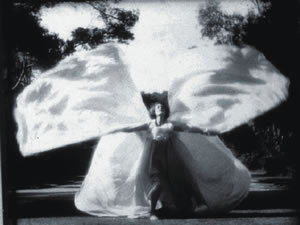
Loïe Fuller is well known for radically transforming dance shortly before the turn of the 20 century. She was a true embodiment of the Art nouveau movement, especially with her famous “veils in motion”. Native of Illinois – United-State, she was an actress before turning to dance. La Danse serpentine ( 1891 ) was her first successful choreography, in which she used the veils in motion, as well as colored lighting. In 1982 she is hired by the Folies-Bergère. One year later she registered a patent for her scenographic apparatus. After touring in England and in the United-States of America she came back in Paris in 1897 and performed La danse du feu ( fire’s dance ) and La danse du lys ( lily’s dance ) in the Folies-Bergères. The pavilion built by the architect Henri Sauvage for Loïe Fuller during the 1900 Universal Exhibition established her fame. She had contributed to the fame of Isadora Duncan, who was part of Fuller’s troupe for some time. In 1908 she founded a dance school which was called “Ballets fantastiques de Loïe Fuller” ( Loïe Fuller’s fantastic ballets ). After World War I she tried herself in cinema. In 1934, six years after her death it is her companion Gab Sorère who shot the movie La féérie fantastique des ballets de Loïe Fuller.
Program presented by Cinémathèque de la Danse
Program presented by Cinémathèque de la Danse
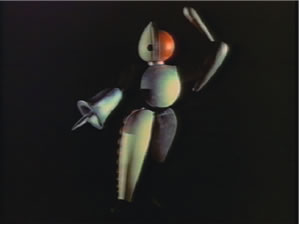
The man on stage becomes “happening” at the heart of this Gesamtkunstwerk which creates a triple harmony between dance, costume and which symbolizes the triad body, mind, soul. The artist, Oskar Schlemmer had polymorphous talent: He was a painter, a sculptor, a choreographer, a musician, a dancer and a composer. In 1921, he joined the Bauhaus as a Master of Form. With his dazzling interdisciplinary mind, he contributed to the inspiring decompartmentalization of artistic domains. As Laurence Louppe asserts “ In Triadic Ballet Schlemmer’s strength lies in the fact that he has made his costumes as if they were stories”. Every costume does dictate the set of doable movements to the body that is hold. Every costume is a choreography which chooses a certain amount of pre-selected gesture while inhibiting the others.
Program presented by Cinémathèque de la Danse
Program presented by Cinémathèque de la Danse

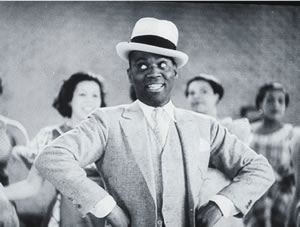
Jo Milgram Collection Part 1, edited by La Cinémathèque de la Danse
« Rockin’ Chair », 1957, with Jack Teagarden and Louis Armstrong/Sweet and Low, 1947, with Sammy Davis Jr & The Will Mastin Trio/ Mr. Bojangles with Bill Robinson and Shirley Temple, 1935/ « Take the A Train », 1943, with: Duke Ellington and his orchestra/ Rhythm and Blues Revue, 1956, with Nat King Cole/ Ain’t Misbehavin’, 1941, with Fats Waller/ International House, 1933, with Cab Calloway
Jo Milgram (1916 – 2005) discovered Jazz when he was a teenager, when he purchased an Armstrong’s 78 rpm record in a flea-market in the 1930′s. Thanks to his ardent enthusiasm, he quickly befriended musicians who were passing through Paris – especially in Saint-Germain-des-Près. He was Boris Vian’s brother in arms as well as Charles Delaunay’s and Maurice Cullaz’s. he discovered Django Reinardt thanks to Pierre Nourry who hosted the Hot Club de France. He attended Louis Amstrong’s, Cab Calloway’s, The Cotton Club’s lives at the Moulin Rouge. In 1970 he began collecting Jazz films at a time when “ there were still interesting catalogs in Hollywood but if we did not cling to them they would have disappeared”. During thirty years and with Daniel Filipacchi’s help, Jo Milgram gathered together one of the most beautiful collection of Jazz films, which is said to amount to more than two hundreds hours of cinematographic images.
Program presented by Cinémathèque de la Danse
« Rockin’ Chair », 1957, with Jack Teagarden and Louis Armstrong/Sweet and Low, 1947, with Sammy Davis Jr & The Will Mastin Trio/ Mr. Bojangles with Bill Robinson and Shirley Temple, 1935/ « Take the A Train », 1943, with: Duke Ellington and his orchestra/ Rhythm and Blues Revue, 1956, with Nat King Cole/ Ain’t Misbehavin’, 1941, with Fats Waller/ International House, 1933, with Cab Calloway
Jo Milgram (1916 – 2005) discovered Jazz when he was a teenager, when he purchased an Armstrong’s 78 rpm record in a flea-market in the 1930′s. Thanks to his ardent enthusiasm, he quickly befriended musicians who were passing through Paris – especially in Saint-Germain-des-Près. He was Boris Vian’s brother in arms as well as Charles Delaunay’s and Maurice Cullaz’s. he discovered Django Reinardt thanks to Pierre Nourry who hosted the Hot Club de France. He attended Louis Amstrong’s, Cab Calloway’s, The Cotton Club’s lives at the Moulin Rouge. In 1970 he began collecting Jazz films at a time when “ there were still interesting catalogs in Hollywood but if we did not cling to them they would have disappeared”. During thirty years and with Daniel Filipacchi’s help, Jo Milgram gathered together one of the most beautiful collection of Jazz films, which is said to amount to more than two hundreds hours of cinematographic images.
Program presented by Cinémathèque de la Danse





























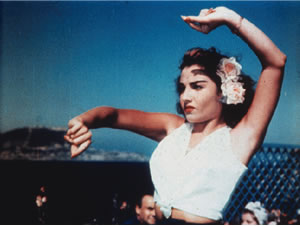

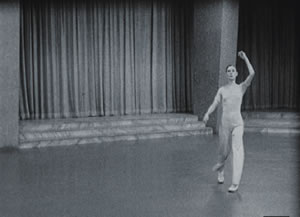



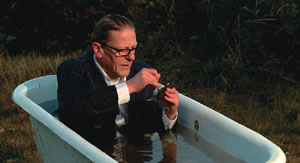 © Regards Productions
© Regards Productions 
